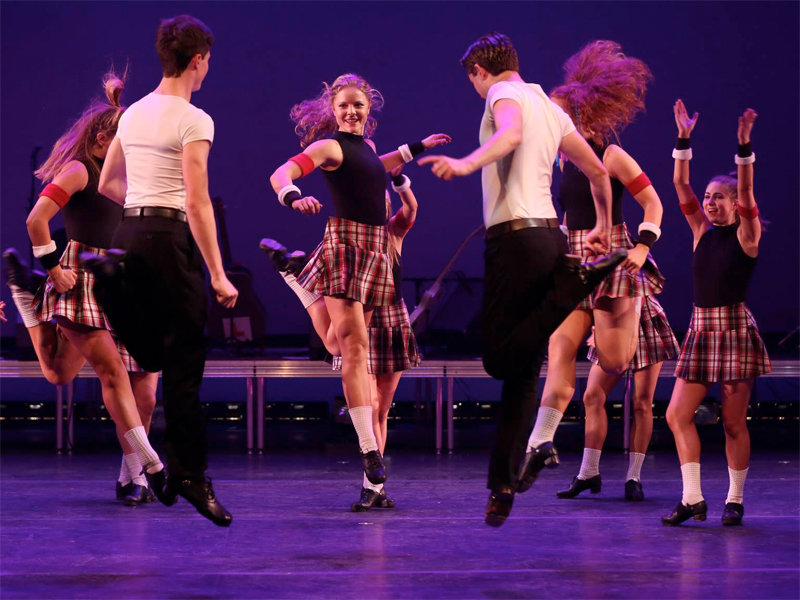The OnMilwaukee.com Summer Festivals Guide is presented by Pick 'n Save, Where Wisconsin Saves on Groceries. Pick 'n Save is Wisconsin proud, and excited to help promote and feed the great Milwaukee summer that includes festivals and fun nearly every day. Click to save here!
As the 35th anniversary of Irish Fest approaches, one icon that is hard to escape in Milwaukee – and in many ways nationally – is its official logo: the smiling leprechaun known today as Paddy McFest.
But Paddy’s development, like other symbols of the Fest, did not come easily, since within the Irish community – and certainly within Ireland – there has long been debate on the way the country and its culture are presented to the world at large.
So, a wee bit ‘o history is in order.
The impetus to create an Irish festival on what was then called the "Summerfest Grounds" came from a small group of people led by Ed Ward, whose Kenosha-based family had a long history, and collection, of Irish music. Ed assembled a group of Irish Milwaukeeans to put together an interim board of directors, which included Mary Cannon, Bernie McCarten and John Maher.
Beyond this group, many other people prominent in the Irish community here weighed in on how to best develop what is now the largest Irish music festival in the world.
Much legwork was involved, of course, including laying out the design on the grounds and getting the necessary permissions from the city. Most importantly, perhaps, was how to market a festival of Irish music in a place known more commonly known for its German heritage (according to a study done in 2006-08, the Irish are the third most common ethnicity in town at 6 percent, while the Germans are at 20 percent).
To Americans, the most familiar icon of Ireland is the leprechaun, the mythical creature whose history in the Old Sod dates to tales in medieval times. Back then, he was known as the shoe-making leith phrogan – there are many variations on the spelling – who was often thought of as a sort of benign trouble-maker.
Until the 20th century, the leprechaun was depicted wearing a red jacket, but in 1902, the jacket became green in the "The Adventures of Darby O’Gill" and has stuck even since – green, of course, being the national color of Ireland.
Or is it?
If you are of "pure Irish" heritage (this writer included) you probably know well of Ireland’s original identification with the color blue, sometimes called "St. Patrick’s Blue." This comes in part from the badge of the Order of St. Patrick, with its blue ribbon, and the original coat of arms of the country, depicting a golden harp on a blue background – the blue representing the sea surrounding the island nation and the harp, of course, its music. That design is still used today as the official Standard of the President of Ireland.
Back in 1980, some in the Irish community felt strongly that the colors of Irish Fest should be the traditional blue and gold. While others agreed this may be more "authentic," that identification would likely be lost to anyone not schooled in Irish history.
Two of the early volunteers were local commercial artists, Jim Finnerty and John Bailey. Finnerty created and Bailey finalized the graphic that would become Paddy McFest. It was well received, but others in the Irish community promoted what was thought to be a more "stylish," if not "pure," design of a green "wave" on a blue background.
So, what to do? Stick with tradition, or follow the time-honored principles of branding and marketing, which tell you to use concepts to which the public at large will respond.
In the end, the little leprechaun, with his green hat and orange beard reflecting the modern Irish flag, won out. The design was refined and, after consultation with Rod Lanser, then president of Summerfest, his smile was included to mimic the Summerfest logo. Paddy finally got his name some years later through a public contest sponsored by the festival.
And to be sure, for the traditionalists, the gold-on-blue motif can easily be found on some of the items sold at Irish Fest’s merchandise shops.
Today Paddy’s smiling face can be seen everywhere, not only in Milwaukee but in many places around the world, including the most famous pubs of Ireland. But Irish Fest has grown beyond far beyond its four-day run to become an institution. Now with nationally-known music archives, a summer school, music school and choir, it’s clear that its marketing orientation needs to change as well.
"Next year, look for a major re-branding of Irish Fest which will reflect its stature as a national and international music event," said Ed Ward. "But have no fear, Paddy will be very much part of our new look."







